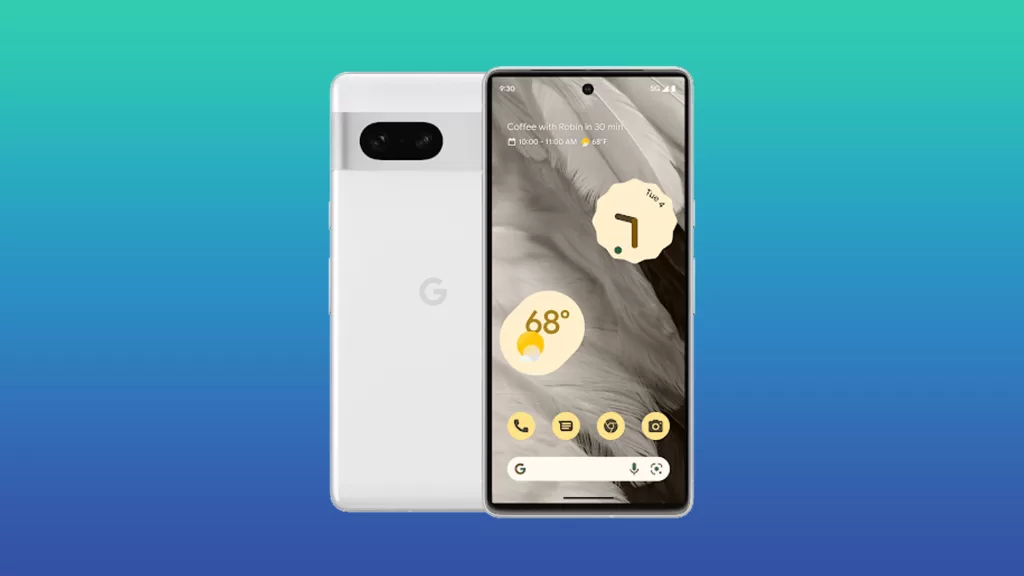GPS is a critical feature for many people, and it can be frustrating when it’s not working properly. If you’re having problems with GPS on your Google Pixel phone, don’t worry. There are a few things you can do to try to fix the issue.

In this article, we’ll discuss the most common causes of GPS problems on the Google Pixel phone and provide troubleshooting tips to help you fix them. We’ll also discuss some additional causes that are specific to the Pixel phone.
In this post:
Common Causes
- Incorrect GPS settings. Make sure that GPS is enabled on your phone and that you have selected the highest accuracy setting.
- Software glitches. Minor software glitches can sometimes cause problems with GPS.
- Outdated software. Older versions of your phone’s software may not be compatible with the latest GPS technology.
- Hardware problems. A damaged GPS antenna or other hardware problems can prevent your phone from receiving GPS signals.
- Weak or no GPS signal. If you are in an area with weak or no GPS signal, your phone will not be able to use GPS.
- Obstructions. Buildings, trees, and other obstructions can block GPS signals.
- Electromagnetic interference. Electromagnetic interference from power lines, cell towers, and other devices can interfere with GPS signals.
In addition to the above, here are some other possible causes of GPS issues on the Google Pixel phone:
- Third-party apps. Some third-party apps can interfere with GPS.
- Battery saver mode. Battery saver mode can sometimes disable GPS in order to save battery life.
- VPN. If you are using a VPN, this can sometimes cause problems with GPS.
1. Check your GPS settings
Make sure that GPS is enabled on your phone and that you have selected the highest accuracy setting.
To check your GPS settings on your Google Pixel phone, follow these steps:
- Open the Settings app.
- Tap Location.
- Make sure that the Use location toggle is turned on.
- Under Mode, tap High accuracy.
- Scroll down and make sure that the Improve Location Accuracy toggle is turned on.
If you want to improve GPS performance, you can also enable the following settings:
- Wi-Fi scanning: This will allow your phone to use Wi-Fi signals to improve GPS accuracy.
- Bluetooth scanning: This will allow your phone to use Bluetooth signals to improve GPS accuracy.
- Mobile network location: This will allow your phone to use cell tower signals to improve GPS accuracy.
2. Restart your phone
A simple restart can often fix minor software glitches that may be causing the GPS problem.
To restart your phone, follow these steps:
- Press and hold the Power button for a few seconds.
- Tap Restart or Power off and restart.
- Wait for your phone to restart.
If your phone is frozen or unresponsive, you may need to force restart it. To force restart your phone, press and hold the Power button and the Volume Down button for about 10 seconds. Your phone will restart automatically.
3. Clear the cache and data for the Google Maps app
Sometimes, corrupted cache and data can cause problems with GPS.
To clear the cache and data for the Google Maps app:
- Open the Settings app.
- Tap Apps or Application manager.
- Select the Google Maps app.
- Tap Storage & cache.
- Tap Clear cache and Clear data.
- Tap OK to confirm.
Note: Clearing the cache will remove temporary files that the app uses to improve performance. Clearing the data will remove all of the app’s data, including settings, saved locations,
4. Update your phone’s software
Make sure that your phone’s software is up to date. Software updates often include bug fixes and performance improvements that can help to resolve GPS issues.
To update your phone’s software, follow these steps:
- Open the Settings app.
- Tap System.
- Tap System update.
- Tap Check for updates.
- If an update is available, tap Download and install.
- Follow the on-screen instructions to complete the update.
Make sure your phone is connected to Wi-Fi and has enough battery life before starting the update.
5. Calibrate your phone’s compass
If your phone’s compass is not calibrated correctly, this can cause problems with GPS.
To calibrate your phone’s compass, follow these steps:
- Go to your phone’s Settings app.
- Search for Compass or Location and tap on it.
- Tap on Calibrate compass.
- Follow the on-screen instructions to calibrate your compass.
The instructions may vary depending on your phone’s model and manufacturer. In general,
6. Try a different GPS app
If you’re still having problems with GPS, try using a different GPS app, such as Waze or Here WeGo. This can help you to determine if the problem is with your phone’s GPS hardware or with the Google Maps app.
If you’ve tried all of the above and you’re still having problems with GPS on your Google Pixel phone, you may need to contact Google support for further assistance.
Here are some additional tips that may help to improve GPS performance on your Google Pixel phone:
- Make sure that you have a clear view of the sky. Buildings, trees, and other obstructions can block GPS signals.
- Avoid using GPS in areas with high electromagnetic interference, such as near power lines or cell towers.
- Turn off Airplane Mode.
- Enable Wi-Fi. Wi-Fi can help to improve GPS accuracy, especially in urban areas.
- Use a GPS booster. A GPS booster is a device that can amplify GPS signals.